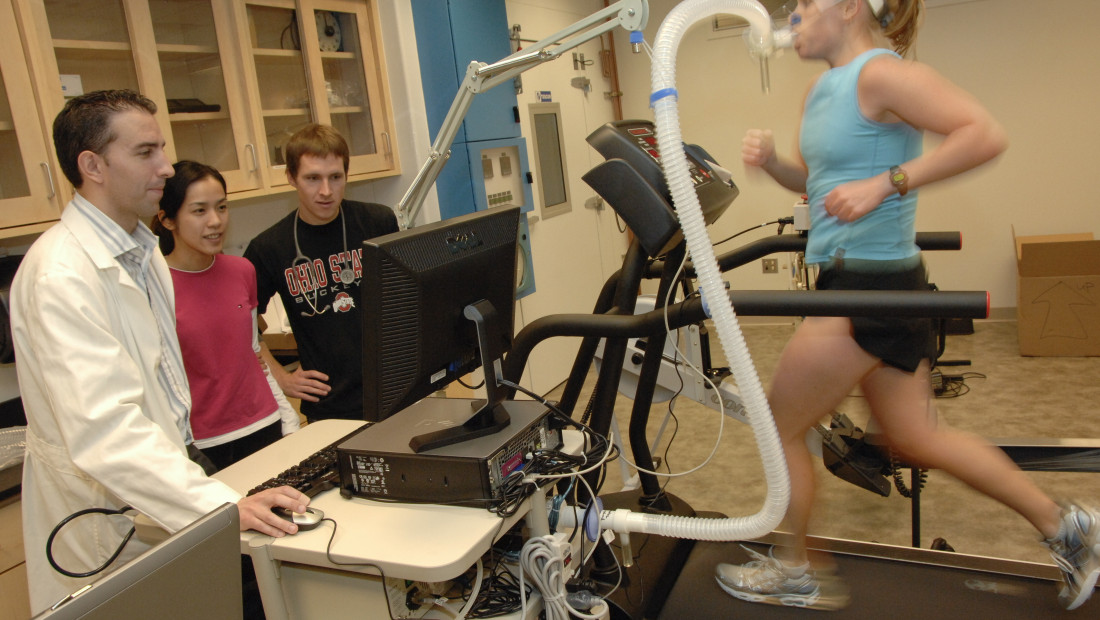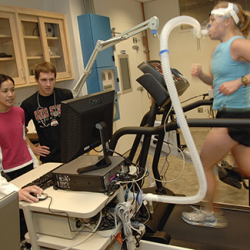
The Kinesiology doctoral program in the College of Education and Human Ecology recently advanced to sixth best among 52 similar programs in the United States, according to the National Academy of Kinesiology.
The latest rankings were announced by the academy at its annual conference in Philadelphia.
The national ranking of kinesiology doctoral programs began in 2005 and is reported every five years. Its very strict criteria consider both faculty and doctoral student performance metrics. In 2005, Ohio State’s doctoral program ranked No. 22 of 32 programs reporting data, and No. 11 of 36 programs in 2010.
Being ranked No. 6 out of 52 programs in 2015 represents a steady and profound rise in program performance and national recognition.
 Carl Maresh
Carl Maresh
“This is an impressive accomplishment, and I’m very proud of our faculty and the students they train,” said Professor Carl Maresh, a member of the kinesiology faculty as well as chair of the Department of Human Sciences, the program’s home. “It demonstrates that a world-class community of faculty members working closely together have increased their productivity in publications, presentations, grants and editorships.
“Perhaps most impressive was the 431 research manuscripts, the highest number among all programs, published over a five-year period by the 18 professors who comprised our faculty cohort.”
“Within the Big Ten schools in particular, we’re very strong,” Maresh said, “and I’m confident we’re going to get even better.”
 Ohio State's diversity of Kinesiology programs attracts students
Ohio State's diversity of Kinesiology programs attracts students
Doctoral students in the top-ranked Kinesiology program may specialize in Health and Exercise Science, Physical Education or Sport Management.
Maresh explained that ranking among the top 10 programs in the country is a terrific accomplishment, especially since the number of programs included in the rankings has increased substantially.
Schools across the country view these rankings as valuable indicators of program success.
Rankings are determined based on faculty metrics, which account for 66 percent of the overall evaluation. Student metrics comprise the remaining 34 percent. Faculty performance includes the number of faculty publications and presentations, total research funding and professional stature. Student performance includes GRE scores, graduate assistantship and scholarship support, selectivity and job placement.
Top programs are built upon active and ongoing scholarly agendas, which adds to the academic integrity and reputation of the program and the school.
Details about the rankings will appear in a forthcoming issue of Kinesiology Review.




